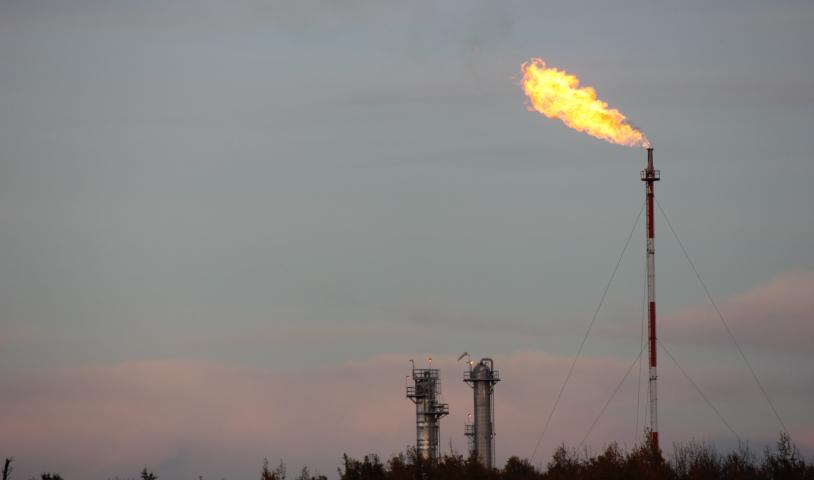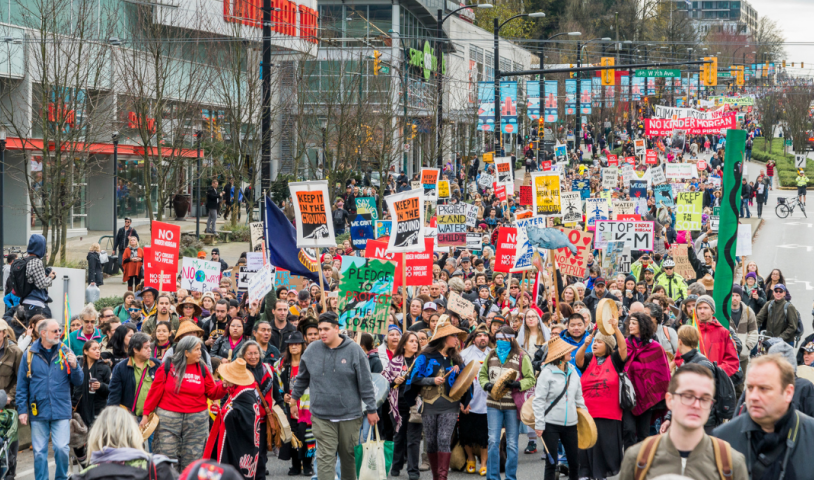What do you think the Site C Dam project is really about?
Tuesday, October 17, 2017

The fate of British Columbia’s largest, and arguably the most controversial, energy project is at stake. The last of the B.C. Utility Commission’s Community Input Sessions was at the Victoria, on October 11, 2017. Having already covered this story dozens of times, I was not that interested in listening to a repetition of the same old arguments. So I asked Torrance Coste of the Wilderness Committee, “What do you think the Site C Dam Project is really about?”
“I think it is a pet project of a Premier and a political party, that, once enough of my generation got old enough to vote, we rejected on mass. I think it is about making money for a handful of people. It is about a government that, the corporations that it deals with — be it gas companies or logging companies — can not get social license to do significant development and provide jobs. So they [the previous BC Government] are using their power, as overseers of B.C. Hydro, to force through development,” he replied.
“They are going about it in completely the wrong way. To force this project through on First Nations that does not want it, on a public that does not want it: is not how you build support and trust. That is what I am going to speak to in the hearings tonight.”
“My generation needs a B.C. Hydro that has the trust of the public. B.C. Hydro can be a really important tool, for the citizens of this province, as a public utility based on renewable resources … That is going to be a huge asset as we move forward in a changing climate. It is not going to be able to that if it does not have any trust or respect from the public and that is what pushing ahead with this dam would do.”

What Do You Hope To Accomplish?
Looking at the 40 or so people coming together for the pre-session rally, I asked Coste, “What do you hope to accomplish?”
“I think it is important that the public, and the folks who are concerned about Site C, get their voices on the record in these sorts of processes. What it does is it takes away the social license of the government to push ahead with projects like this, or if it is a private project it takes away the social license of corporations,” he said.
“So far you can go online and read every word of what has been stated at these hearings. There has been ten so far, this is the eleventh and final. Almost everyone that has presented, has presented in opposition to the dam. Last night in Nanaimo there were seven presenting in favor of the dam and twenty-five opposed. So it is very clear that this dam is not in the public interest.”
Coste added, “The BCUC is supposed to be a third party body to give an independent report, but it is important to send a message to the B.C. government that they don’t have our permission to push ahead with this dam.”

The Crowd
The number of people at that pre-session rally doubled before it was over. The demographics also changed. Most of the initial participants were over fifty. Close to a third were probably in their twenties or thirties when they dispersed.
A much larger crowd gathered inside the conference center. I suspect there were around 250. Someone from the B.C. Utilities Commission said it was a full house.

Galen Armstrong, of Sierra Club BC, said, “There have been fifteen hearings, including the three First Nations sessions, one of which just ended. They’ve been very well attended. They’ve been packed houses almost everywhere they’ve gone. They’ve gone to Kamloops, Kelowna, Nelson, Fort St John, Hudson’s Hope, last night Nanaimo.”
There were a few well known names among the speakers in Victoria, but the vast majority of those present appear to have simply been concerned citizens. If mainstream media had been present, they would probably dismiss this crowd as “environmentalists.”
So what is the appropriate label for the few, largely corporate, spokespeople who speak in favor of this project?: “Shills?”

Organizer Of The Pre-Session Rally
The pre-session rally was organized by a local organic farmer. Nathalie Chambers is also the Chair of the Farmland Protection Coalition and author of ‘Saving Farmland: The Fight for Real Food.”
“Flooding 30,000 acres of the best farmland in the north, when we are heading for drought –scientifically documented — in the south, is very irresponsible of us. And that is not even to discuss the extreme wildlife that would be at stake if this project goes through grizzlies, wolves, all sorts of things. The biggest thing is that we are the most food insecure province in Canada. I am calling on our new government. I am calling on Lana [Popham], Minister of Agriculture, to once again review this project, which is over budget and which the residents of British Columbia will not subsidize. We do not want to be on the hook. We do not want to be held pirate for this unsustainable project any longer,” she said.
 \
\
I asked, “Do you really believe that the Peace River Valley is capable of feeding a million people?”
“A hundred percent. I do. I am a farmer and I know what is grown. Actually, I know that land very well because I started my journey as an environmentalist as a tree planter. Planting in the Peace and along that area is something I am acquainted with. I know the soils there and I know the land.”
“So I will say yes and we have a shifting climate. The zones are shifting; the flowering zones. Richard Hebda [former curator of Botany and Earth History at the Royal BC Museum] … has written that in the next fifty years Douglas Fir will be growing in the Yukon. Things are changing and we really need to utilize the precautionary principle.
“We need to do that now more than ever. We have a growing population and a decreasing land base … We need to be responsible. We need to hold the line. It’s going to be hard, but that is what we must do.”
Yvonne Tupper
Yvonne Tupper, of Saulteau First Nation, was one of the people who addressed the pre-session rally.
“I was fortunate enough to have the time to come down. I travelled 1,200 kilometers from north-eastern B.C. My territory is Treaty 8, Peace River Valley.”
“Site C is currently being built in our back yard. It affects so many aspects: environmentally, spiritually, economically, even our trust of the government. We’ve been saying no to Site C for fifty years …We beat it in the eighties and we thought it was dead in the ground and we didn’t have to worry about this beast … We’re hoping that with the B.C. Utilities Commission, this will be the end of this Site C beast.”
“They weren’t listening to our ‘no.’ .. This is not about the money, this is about our livelihoods. This is about our culture. This about our Treaty meaning something here in Canada. This is 2017 and this is Canada. Canada, can’t you do better? British Columbia, can’t you do better?”
Mikisew Cree First Nation
The names that most readily come to mind when thinking of Site C’s perceived violations of Treaty 8 come from thePeace River Valley. The Mikisew Cree First Nation are downstream come from Lake Chipewyan in northeast Alberta.
“We’re a downstream community from the Site C dam project. Our impacts are [to] the Peace-Athabasca Delta. It affects our people’s way of life, through medicine, culture and practicing our traditional rights, hunting and fishing,” said Councillor Calvin Waquan.

“Going home now, after years of being away in Edmonton and practicing my academics and athletics, I move back home to be a leader in my community and I’ve seen the cumulative effects it is having on our people. You can’t even practice our traditional treaty rights, of Treaty 8, of fishing and hunting. You can pretty much walk across the mud flats because it is drying up. Our delta is impacted from downstream industries from the south, but also from BC Hydro from the Bennett Dam and also the Site C proposed Dam. Letting this project go ahead is pretty much cutting off our lifeline.”
“My children won’t be able to experience stuff that I experienced when I was a kid. I got to go out on the land, to see the muskeg, the plains. … the bison … the wolf interactions with them. It is slowly dying off.”
What Does This Project Say About Our Treaty Process?
I asked Torrance Coste, “What does this project say about our treaty process?”
“It says it is absolutely broken. More movement was born out of this systematic multi-hundred year breaking of treaty and the new [Trudeau] government has failed to address that Federally. The B.C. Government has expressed interest in addressing and implementing the United Nations Declaration on the Rights of Indigenous Peoples (UNDRIP),” he said.
“This dam is not in keeping with that. I don’t know what is going to happen retroactively if the dam is almost built and they bring in UNDRIP. What liability will the province be open to?; What liability us tax payers will be open to? And if they don’t bring it in, they will have broken a major process.”
“So the clear move for the government is to cancel this dam and then bring in UNDRIP and move forward with hydro projects under that framework – that have prior and informed consent of indigenous peoples and truly honours treaties in the parts of B.C. where we have them.”

Cancelling Site C
Coste outlined some of the other issues connected to cancelling Site C.
“My generation deserves to inherit a BC Hydro the same as our parents did, one that is financially stable and has public trust. BC Hydro will have neither of these if Site C is built.”
“I think we need to cancel Site C in a just way, one that does not leave the workers completely out to dry. This is not their fault. Cancelling this dam will be a huge saving for the province of B.C. Part of that should go towards compensating the workers who moved to the Peace, or were banking on this dam, for their immediate losses.
“That’s how we save money, save a beautiful valley and do it in a just way. I think that’s something that everyone wants.”

The First Eight Speakers
Turning my recorder off, I proceeded to the Community Input Session and listened to the first eight speakers. There undoubtedly were people in favor of the dam, but they spoke later. I did not see, or hear anyone supporting the proposed Site C Dam project.
Photo Credits: B.C. Utility Commission’s Community Input Sessions at Victoria, on October 11, 2017 – Courtesy Emily Hoffpauir/Wilderness Committee; SoundCloud podcast of segment for the ECOreport’s October 18 broadcast on KTZ, 89.5 FM; Torrance Coste & Emily Hoffpauir; Some of the initial participants at the anti Site C rally outside the Victoria on October 11, 2017. – photo courtesy Mark Gustafson, JFK Law; Galen Armstrong of Sierra Club BC, Yvonne Tupper, of Saulteau First Nation; Melody Lepine & Councillor Calvin Waquan of Mikisew Cree First Nation – all Courtesy Emily Hoffpauir, Wilderness Committee; Map – Roy L Hales; No Site C- Courtesy Emily Hoffpauir, Wilderness Committee





